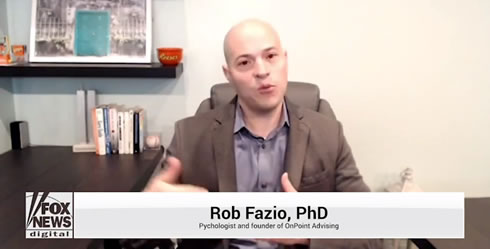Leadership During Layoffs: How Those Staying Can Empower Those Leaving from Philadelphia Business Journal 12/02/2008
Leadership is written about in countless books and online resources. However, there is a gap. Not many leadership gurus talk about the true test of leaders, leading in times of adversity.
The financial crisis, war for talent, and integration of multiple generations has created the perfect storm and, quite frankly, the perfect mess. People go into their offices consumed with concern for their career rather than purpose and passion for achieving. We know from years of research that employee engagement is critical to success because engagement keeps people loyal, motivated, and keeps people with the company. However, what about during Undesired Transitions, such as layoffs?
Today, leaders need to be tremendous influencers. They need to be able to read and influence quickly and effectively so they can increase employee engagement rather than watch people be fearful.
What executives can do during Undesired Transitions:
Empower those leaving
Connect, Care, and Challenge: People don’t care what you know, until they know that you care. It is critical that leaders demonstrate behavior associated with caring for others (empathy, listening, support). These three C’s are a foundation for growth in times of adversity. Connect represents building relationships, Care represents letting the person know you are on the same team, and Challenge represents inviting the person to grow and develop strategies to take action.
Build Sensible Hope: Be straightforward and honest. As a person who has positional power you are someone who has natural influence. Use that to be realistic about the situation and offer ways to build hope for the future. This doesn’t mean creating cheesy slogans or lines. This does mean finding ways to make this transition a catalyst for growth. For example, you can communicate stories of people you may know who have used Undesired Transitions as an opportunity to pursue a different career or re-create their brand.
Discuss their Story and their Brand: Some people are better at creating and telling their story than others. I had a friend get laid off from a large investment bank and within two weeks he had a new job. This is because he had his story straight. Having a story of who you are, why you are in this situation, and what you want is very helpful. Find ways to develop the person’s brand so they can go into an interview or speak to their network with confidence.
Engage those staying
Navigate the V-SEA: We know that people have a need for clarity and direction, especially during transitions. V-SEA stands for Vision, Strategy, Execution, and Accountability. Leaders need to keep sharp and communicate the where, what, why, who, and when related to the organization’s future. Even if there is uncertainty, leaders must continue to have a future focus and create a sense of moving forward.
Match your Intention with Your Impact: Know what message you want to send, know what message is being received, and know what to change until there is a match. In my work with executives I teach them how to apply skills related to executive emotional intelligence. The key ingredients are the ability to read and influence yourself, your people, and your situations. The most successful executives receive consistent feedback and aren’t afraid to hold the mirror up to themselves. These executives become trusted and influential.
Involve Key People in the Transition: One of the most important gifts you can give your people that are staying is the opportunity to help those that are leaving. This is a winning strategy with impact. The people who help those leaving feel good and offer support and strategies, the people who are leaving feel supported and strengthen their network, you (the leader) gain from taking action and creating value, and the organization benefits from how it is perceived. This gives people a sense of purpose and the focus shifts from what you can’t control (layoffs) to what they can control (supporting colleagues). Create a plan to leverage the strengths of each person.
The bottom line
People do not want to feel helpless and hopeless, and you can prevent that. The more an executive can put others in a place to take action, the more engaged employees will be. The decisions that you make today and your behavior will create a brand that will be woven into the fabric of an organization for years to come.
Now is the time to let the people know who are being laid off not to take time off. It is essential that they have a sense of urgency. It is almost like a house that sits on the market for too long. People begin to wonder why. Urgency is not desperation; urgency can be a tool that is integrated with confidence. The impression this makes is that the person is competent and has a results-orientation.
As a leader do you want to sit back and watch the results of this crisis and be a victim, or do you want to be a leader and positively influence the people around you?



























